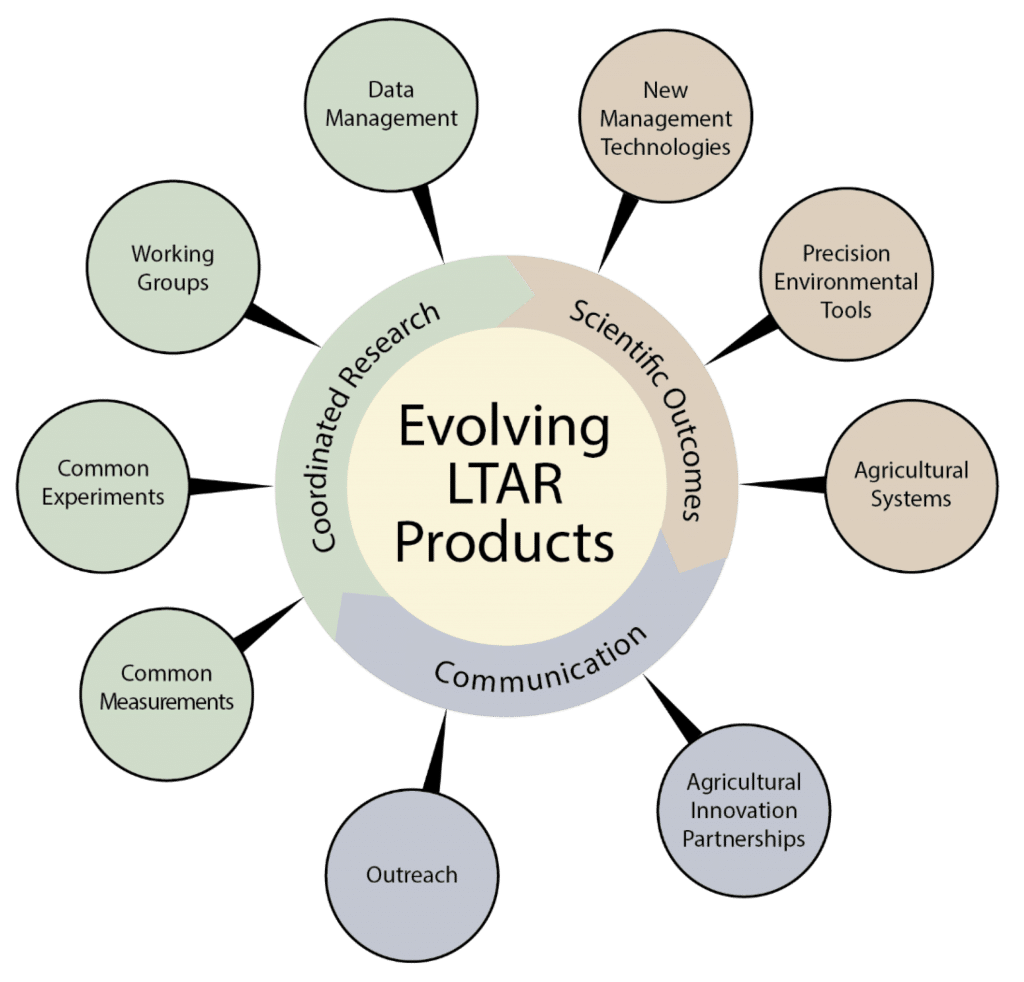Organization and Structure
LTAR's Organization and StructureLTAR Coordinated Research (to be updated)
The LTAR network integrates question-driven research projects with common measurements on multiple agroecosystems (croplands, rangelands, and pasturelands) and develops new technologies to address agricultural challenges and opportunities. In addition, the LTAR network provides common measurements and data streams that complement other federally-funded national networks, such as the National Ecological Observatory Network (NEON) and the Long Term Ecological Research (LTER) network. The LTAR network features four linked approaches.
1. Coordinated Agroecosystem Research
Coordinating our research enables us to improve our understanding of how agroecosystems function at the field, regional, and national scales. Every network site has experiments with common goals and methods aiming to increase agricultural productivity and profitability while reducing negative environmental impacts, enhancing ecosystem services from agricultural landscapes, and improving opportunities for rural communities. Coordinated research allows scientists to develop and to test innovations across the United States, including new genetics, new production techniques, and sensor infrastructure.
2. Information Management

3. New Management Technologies and Tools
Producers, landowners, policymakers, and the public want to make informed decisions about agricultural systems based on productivity, ecosystem services, off-site impacts, market conditions, rural prosperity, and future climate. Linking field monitoring, remote sensing, computer models, and web and mobile technologies provides scientists and producers with the tools to evaluate the multiple effects of agronomic practices and to manage the tradeoffs between production and nonproduction services. Site-specific decision support tools can also enhance adaptive management, improve conservation investments, and reduce producer overhead costs.
4. Agricultural Innovation
Partnerships Effective engagement with producers, industry, and other stakeholders increases the utility and adoption of information and technologies. The LTAR network includes social scientists in collaborative experiments to understand stakeholder needs and to incorporate new science information in practices and technologies that are adopted by producers and accepted by the public. Collaborations with industry promote the refinement and dissemination of technologies and expand markets for sustainably-produced agricultural products.
LTAR Structure (to be updated)
ABOUT LTAR
The USDA Agricultural Research Service (ARS) Long-Term Agroecosystem Research network consists of 18 Federal and university agricultural research sites with an average of over 50 years of history. The goal of this research network is to ensure sustained crop and livestock production and ecosystem services from agroecosystems, and to forecast and verify the effects of environmental trends, public policies, and emerging technologies.


